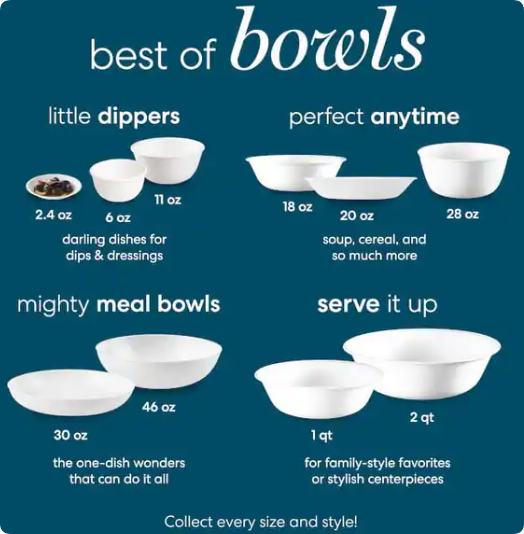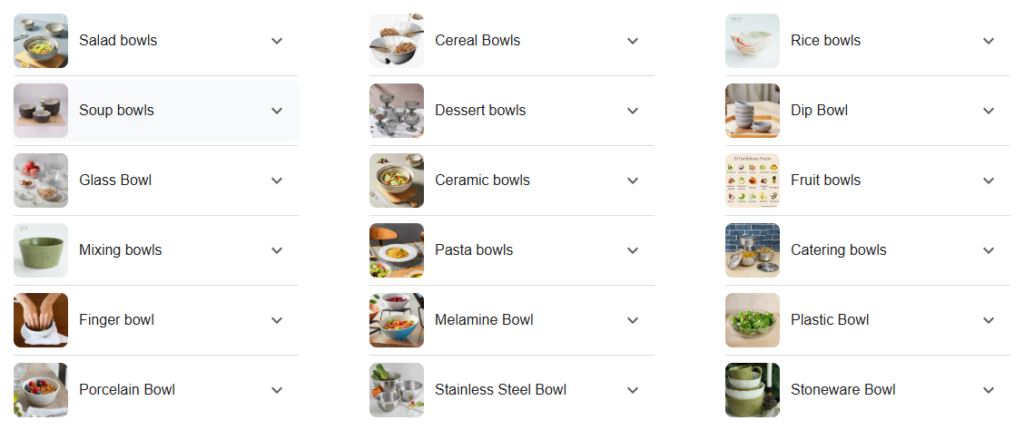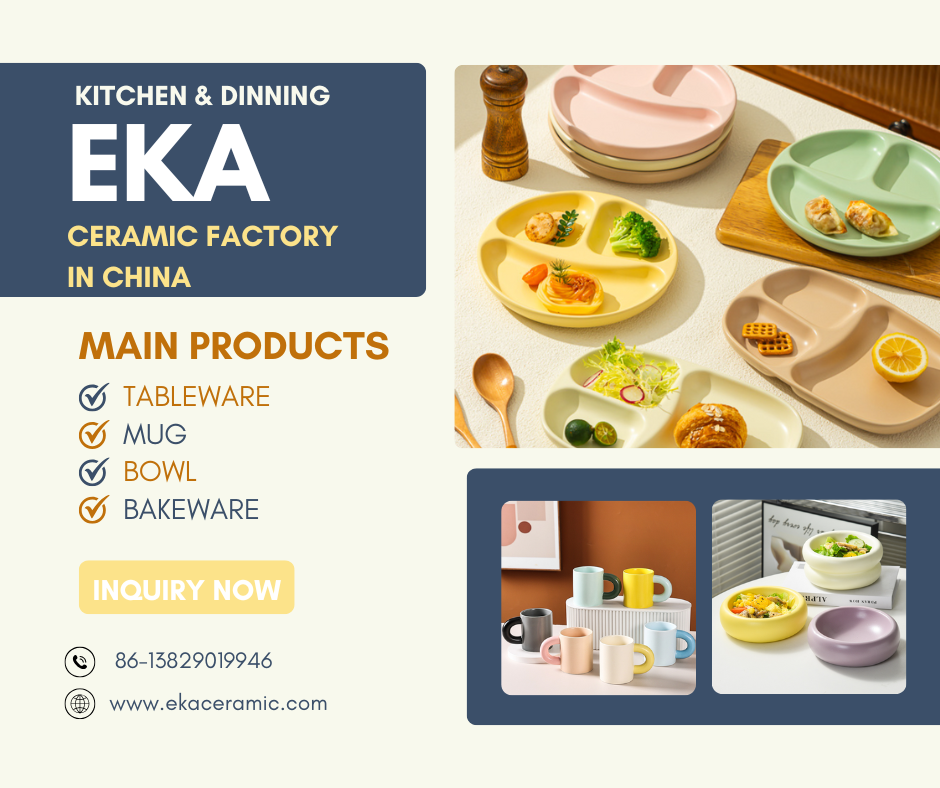By EKA Ceramic
In the world of tableware and ceramics, the serving bowl holds a central role in any dining or culinary experience. Often used in both home kitchens and professional settings, a serving bowl is designed for presenting and serving food in an attractive yet practical manner. But with a wide range of options available in the market, many B2B purchasers—whether for large-scale supermarket chains or small-batch e-commerce vendors—find themselves asking: What exactly is a serving bowl, and how do I select the right one for my business?
This comprehensive guide will walk you through the various types of serving bowls, their materials, their features, and how you can make an informed decision when sourcing them for your business needs.
What is a Serving Bowl?
A serving bowl is a broad, deep bowl designed primarily for serving food to a group of people. Unlike small bowls used for individual portions, serving bowls come in larger sizes and are meant to hold communal portions of food—everything from salads to pastas to soups or desserts.

Typically, serving bowls are made from various materials such as porcelain, stoneware, glass, and metal, with porcelain being the most popular in the ceramics industry. Their design is generally round or oval, but they can come in various shapes depending on the intended purpose and the style of the tableware.
Key Features of a Serving Bowl:
- Size and Capacity: Larger than individual bowls, typically ranging from 20 cm to over 30 cm in diameter, with the capacity to hold up to 2-5 liters or more depending on the design.
- Material: Common materials include porcelain, ceramic, stoneware, glass, and even melamine for specific use cases like outdoor dining.
- Shape: While most serving bowls are round or oval, you may find square or rectangular options for specific presentation needs.
- Depth: Serving bowls are generally deeper than salad or cereal bowls to ensure they can hold substantial portions of food, preventing spillage during serving.
Different Types of Serving Bowls

Serving bowls come in various designs to meet different culinary needs, from casual everyday dining to elegant formal events. Below are the most common types of serving bowls:
- Salad Bowls: Generally wide and shallow, salad bowls are designed to hold a large amount of salad ingredients or tossed dishes. Their shape allows for easy mixing and serving of salads.
- Soup Bowls: Slightly deeper than salad bowls, soup bowls are used for serving soups or broths. While some are designed with a handle for easy serving, others are classic deep bowls.
- Pasta Bowls: These are typically shallow and wide, allowing for easy serving of pasta dishes. The larger diameter allows for comfortable presentation of pasta alongside sauces.
- Fruit Bowls: Larger bowls designed to hold fresh fruit, usually placed on dining tables for a decorative and functional purpose.
- Mixing Bowls: Though primarily used for preparation, these bowls are occasionally used for serving due to their large capacity and versatile design.
18 Types of Serving Dishes Every Party Closet Needs
It’s no secret that Americans have made dinners at home a more casual affair over the last several decades, preferring to set the table with informal dishware most nights and breaking out their fine china only for when celebrating holidays and milestones or when entertaining friends and family—if at all.
Material Comparison: Which One is Right for Your Business?
When selecting serving bowls for your business, the material plays a crucial role not just in functionality but also in the aesthetic appeal and durability of the product. Different materials offer various benefits depending on the use case, price range, and customer preferences. Below is a detailed comparison of the most common materials used in serving bowls.
| Material | Pros | Cons | Best For |
|---|---|---|---|
| Porcelain | – Elegant, shiny appearance – Highly durable – Resistant to stains and odors – Microwave and dishwasher safe | – Expensive – Can chip or crack with heavy use | High-end restaurants, gift shops, premium product lines |
| Stoneware | – Rustic, earthy look – Good heat retention – Versatile for everyday and casual dining | – Heavier than porcelain – Prone to chipping if not handled properly | Casual dining, outdoor restaurants, home use |
| Ceramic | – Affordable – Available in various colors and designs – Easy to clean | – Prone to cracking or breaking under heavy impact | Mid-range market, supermarkets, eco-conscious brands |
| Glass | – Sleek and transparent – Great for displaying food – Non-porous and easy to clean | – Fragile – Can break easily | Buffets, specialty events, decorative displays |
| Melamine | – Lightweight, durable, and break-resistant – Affordable – Available in many designs | – Not microwave safe – May stain over time | Outdoor dining, cafeterias, casual restaurants |
Considerations When Sourcing Serving Bowls
Selecting the right serving bowls for your business requires more than just picking a random design or material. It’s important to consider several factors to ensure the bowls you source meet both the aesthetic and practical needs of your customers. Here are some essential factors to keep in mind:

1. Functionality
Ensure the bowls are fit for the intended purpose. For example, if your clients are in the restaurant business, they may need durable, stackable bowls that are resistant to breakage. If the target market is more upscale, you might want to offer elegant porcelain or fine ceramic bowls that align with premium dining experiences.
2. Durability
Porcelain and stoneware are known for their durability, making them ideal for long-term use in restaurants and hotels. On the other hand, melamine bowls, while lightweight and affordable, are better suited for informal settings and have limitations in terms of heat resistance.
3. Design and Aesthetic
The design should match the style of your customer’s establishment or intended market. If you’re selling to high-end restaurants, sleek, minimalist porcelain or ceramic bowls would be ideal. For casual restaurants or even home use, rustic stoneware or even modern melamine options might be a better fit.
4. Customization
Many B2B buyers prefer customized products that align with their brand or aesthetic vision. Offering ODM (Original Design Manufacturing) and OEM (Original Equipment Manufacturing) services is a major advantage in this area. EKA Ceramic, for example, specializes in large orders and small-batch customization, making it easier for clients to order serving bowls tailored to their exact needs.
5. Stackability
If your buyers are purchasing in bulk for restaurants or hotels, stackability can be an important factor to ensure efficient storage. Porcelain and ceramic bowls often have designs that allow for easy stacking without taking up excessive space.
6. Ease of Maintenance
Easy-to-clean materials like porcelain and ceramic are often preferred by restaurants and other commercial establishments because they are microwave and dishwasher safe. Melamine, while practical, is not microwave safe, so it may be less suitable for some markets.
Tips for B2B Purchasers
When selecting serving bowls for your business, here are some tips that will help you make an informed decision:
- Quality Over Quantity: Choose bowls that provide long-term value, particularly for commercial settings. Higher-quality materials like porcelain may be more expensive upfront but will last longer and serve your clients better in the long run.
- Consider Your Market: Understand the preferences and requirements of your market. For example, if you’re catering to high-end restaurants, focus on elegant porcelain bowls. If your target is more casual dining or takeout businesses, melamine or ceramic might be more appropriate.
- Sustainability: More businesses are leaning towards sustainable options. Look for suppliers that offer eco-friendly, non-toxic, and biodegradable options where possible.
- Sample Before Purchase: If you’re unsure about the quality or design of a bowl, it’s always a good idea to request a sample before placing a bulk order.
Conclusion
A serving bowl is more than just a functional kitchen item; it’s a part of the dining experience. For B2B purchasers, selecting the right serving bowls can enhance the dining experience for their customers while also ensuring the bowls are durable, stylish, and easy to maintain. Whether you’re a large-scale supermarket sourcing for restaurants or a small-batch e-commerce vendor looking for premium options, understanding the various types and materials of serving bowls is crucial to making the right choice for your business.
At EKA Ceramic, we offer a wide range of high-quality ceramic and porcelain serving bowls, with both ODM and OEM options available for businesses of all sizes. Contact us today to explore our catalog and discover how our products can enhance your business offering.

